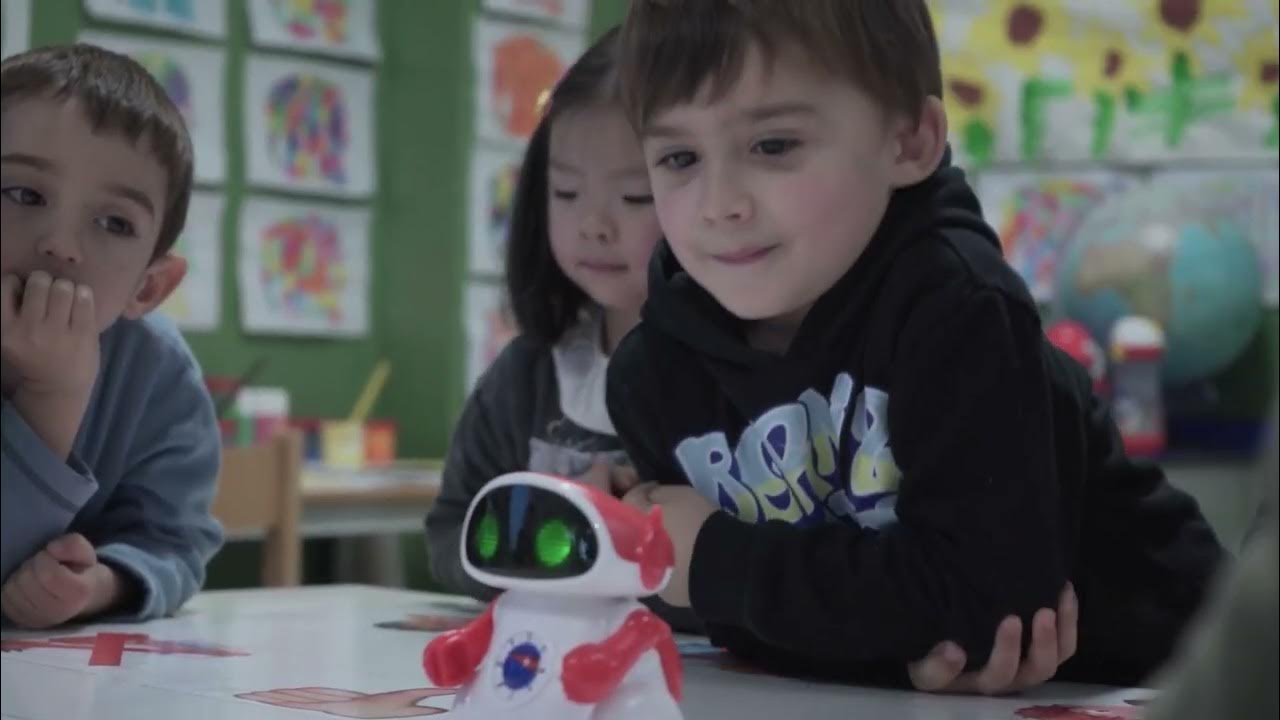Making a Math Lesson More Hands-On
Summary
TLDRLea, a math teacher, utilizes a playful, hands-on approach to teaching geometry, focusing on student engagement and creativity. Through activities like drawing circles and building three-dimensional shapes, students are encouraged to experiment and problem-solve. By incorporating freedom and collaboration, students connect emotionally with the material, making learning fun and memorable. Instead of traditional methods, which can lead to forgetfulness, this approach ensures deeper understanding and retention of concepts. Despite covering fewer topics, playful learning offers a more lasting impact, fostering critical thinking and creativity in students.
Takeaways
- 😀 Playful learning helps students retain what they learn by making math engaging and hands-on.
- 😀 Students benefit from physical involvement in learning, as it allows them to better understand abstract concepts.
- 😀 Activities like drawing a circle with string encourage creativity and group collaboration while learning geometry.
- 😀 Writing directly on the tables in Lea's classroom creates an interactive and fun learning environment.
- 😀 Hands-on activities allow students to recall and apply mathematical terms (e.g., radius, diameter) effectively.
- 😀 Giving students the freedom to experiment, such as guessing the volume of geometric shapes, sparks critical thinking and problem-solving.
- 😀 Playful learning fosters a deeper connection with the material, ensuring that students remember the concepts better than in traditional learning settings.
- 😀 By letting students make mistakes and try again, playful learning develops resilience and a growth mindset.
- 😀 The teacher's role in playful learning is to support and guide students while allowing them to take ownership of their learning.
- 😀 Playful learning may cover fewer topics than traditional teaching but results in a more thorough understanding of the material.
Q & A
What is the main teaching approach discussed in the script?
-The main teaching approach discussed is playful, hands-on learning, where students engage with math concepts through physical activities and creative problem-solving.
Why does Lea believe playful learning helps students retain information?
-Lea believes playful learning helps students retain information because it encourages active engagement with the material, allowing students to explore, create, and physically interact with math concepts, which makes them more memorable.
What specific activity did the students do to start learning about geometry?
-To start learning about geometry, students worked in groups to draw a circle using a piece of string and something to draw with, without being told how to do it.
How does the physical interaction with the learning environment (e.g., drawing on tables) impact the students?
-The ability to draw on the tables allows students to be more creative and engaged. It also makes the activity more enjoyable since they are doing something they typically cannot do, such as writing on surfaces.
What concepts were the students introduced to while drawing the circles?
-The students were introduced to geometric terms such as 'radius' and 'diameter' while drawing the circles.
How does the teacher, Lea, manage the balance between allowing creativity and providing guidance?
-Lea steps back to let the students take ownership of their learning but provides support when needed, especially when students face challenges or need help in understanding certain concepts.
What did the students do during the next activity involving building geometric figures?
-In the next activity, students built a cube and a pyramid, and they were asked to guess the volume of the figures before calculating it.
Why did Lea have the students guess the volume of the figures before calculating it?
-Lea had the students guess the volume first to encourage them to think critically and estimate, which helps in developing their problem-solving skills and understanding of the concept.
What role does creativity play in the learning process described in the script?
-Creativity plays a crucial role as it helps students engage more deeply with the material. For example, students used extra materials to build sturdy structures and problem-solve in creative ways, which enhances both learning and enjoyment.
What is the impact of emotional experiences (like frustration and joy) on the students' learning?
-Emotional experiences, such as frustration and joy, contribute to a deeper connection with the learning process. Lea believes that these emotions make the learning more meaningful and memorable, helping students learn through both success and challenge.
How does playful learning differ from traditional teaching methods in terms of student retention?
-Playful learning, although covering fewer topics, leads to better retention because students engage more deeply with the material. In traditional teaching, students may move through many topics without truly understanding or remembering them.
Outlines

This section is available to paid users only. Please upgrade to access this part.
Upgrade NowMindmap

This section is available to paid users only. Please upgrade to access this part.
Upgrade NowKeywords

This section is available to paid users only. Please upgrade to access this part.
Upgrade NowHighlights

This section is available to paid users only. Please upgrade to access this part.
Upgrade NowTranscripts

This section is available to paid users only. Please upgrade to access this part.
Upgrade NowBrowse More Related Video

CDE Agimos para Transformar AE de Nisa

PENDIDIKAN MATEMATIKA - DIAGRAM LINGKARAN

KANA || Film Pendek Sosialisasi Anti Bullying || SD Eka Tjipta Hanau 2022

LESSON STUDY JAPAN

SD3 Membangun suasana aktif, interaktif dan menyenangkan

How Gaming can Increase Engagement in Education | Arnav Patel | TEDxYouth@YCYWShanghai
5.0 / 5 (0 votes)